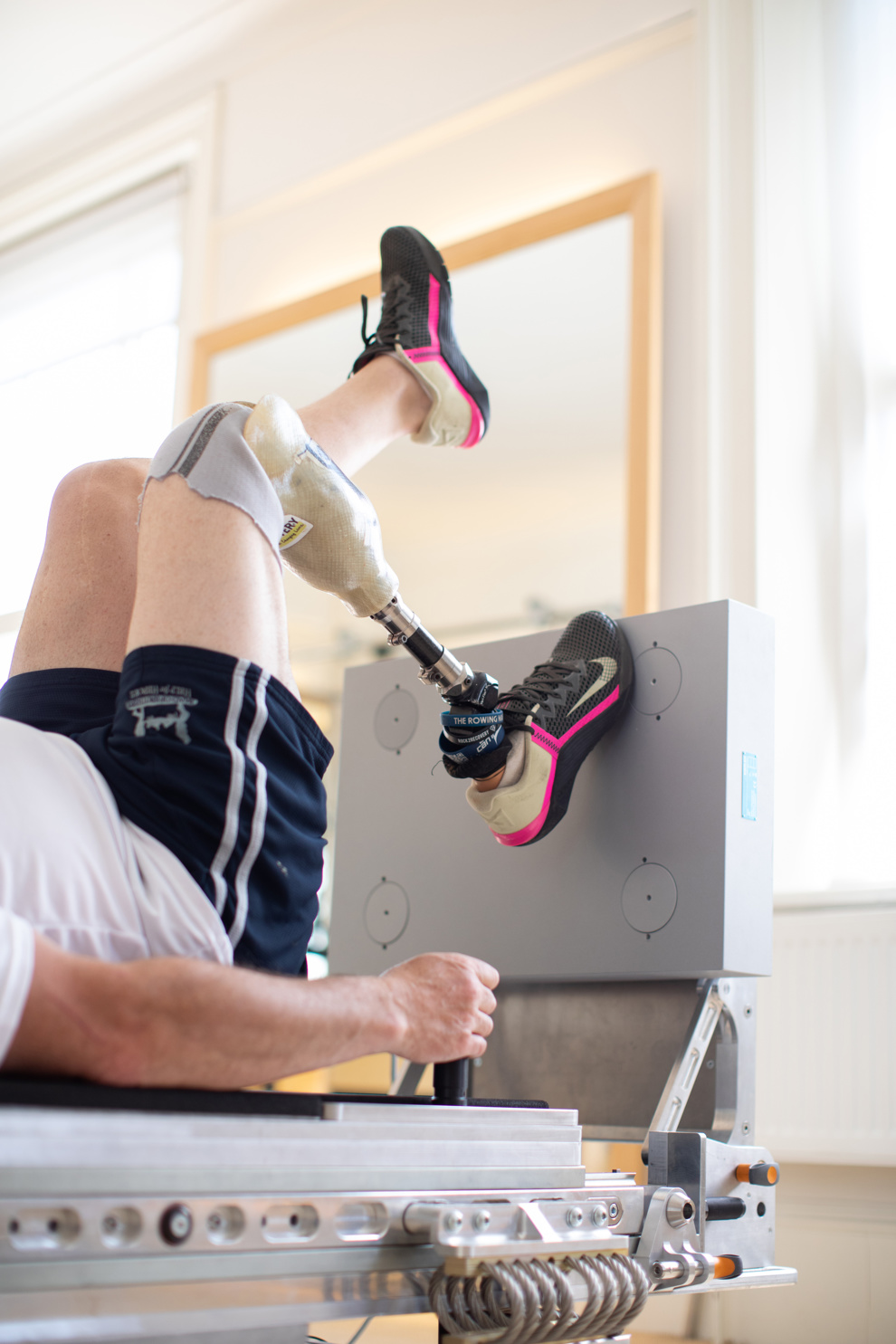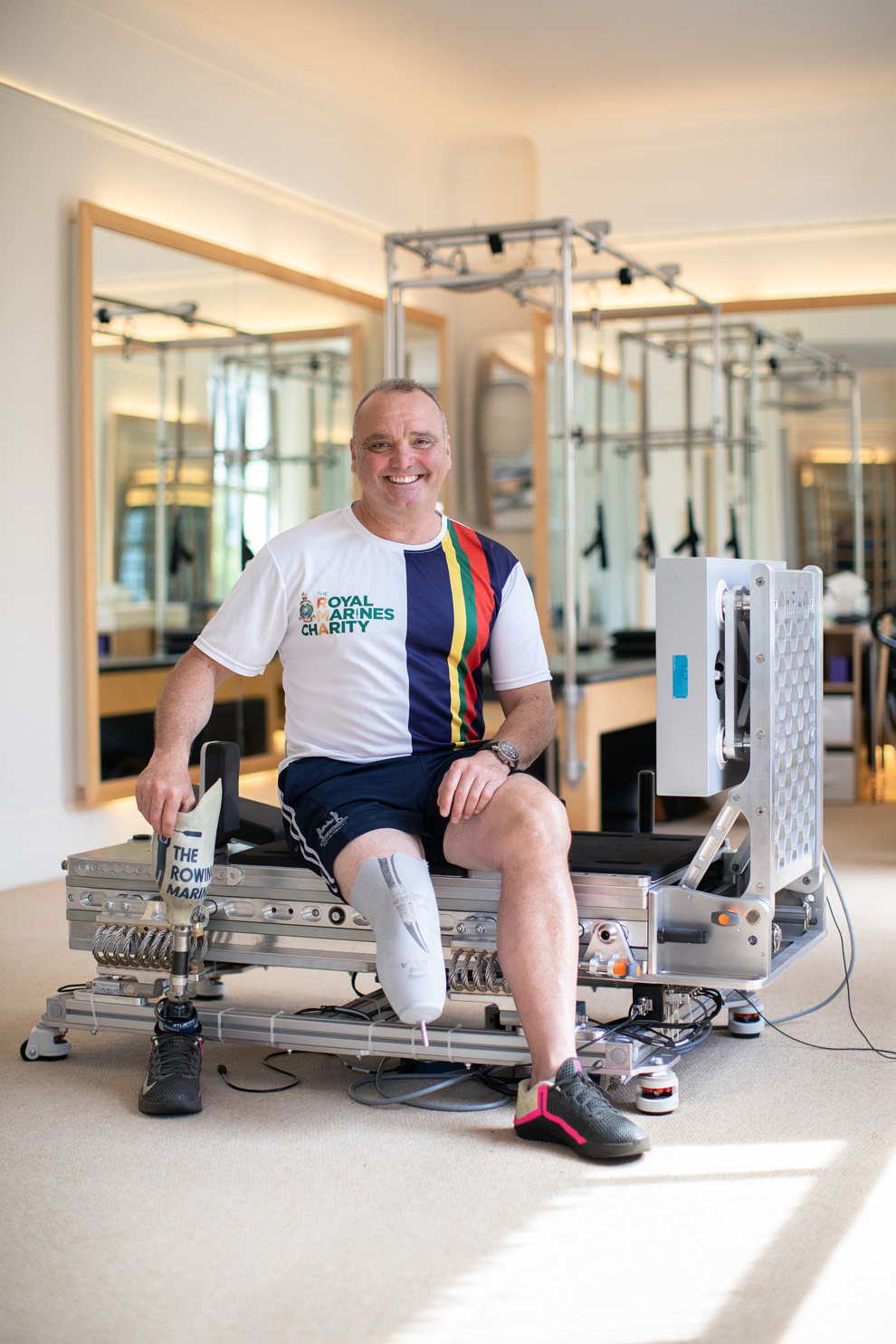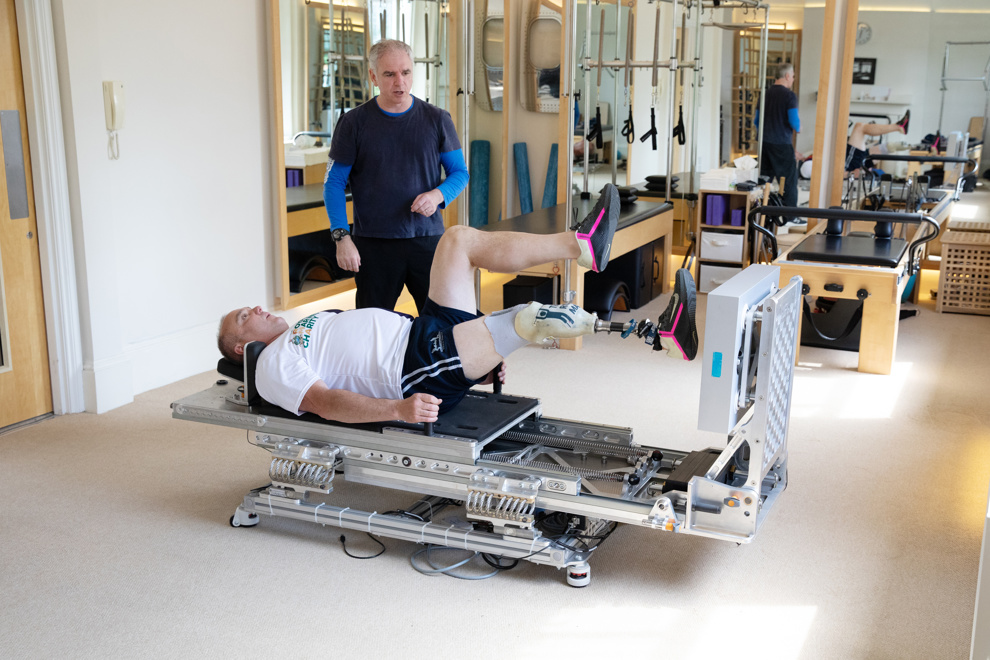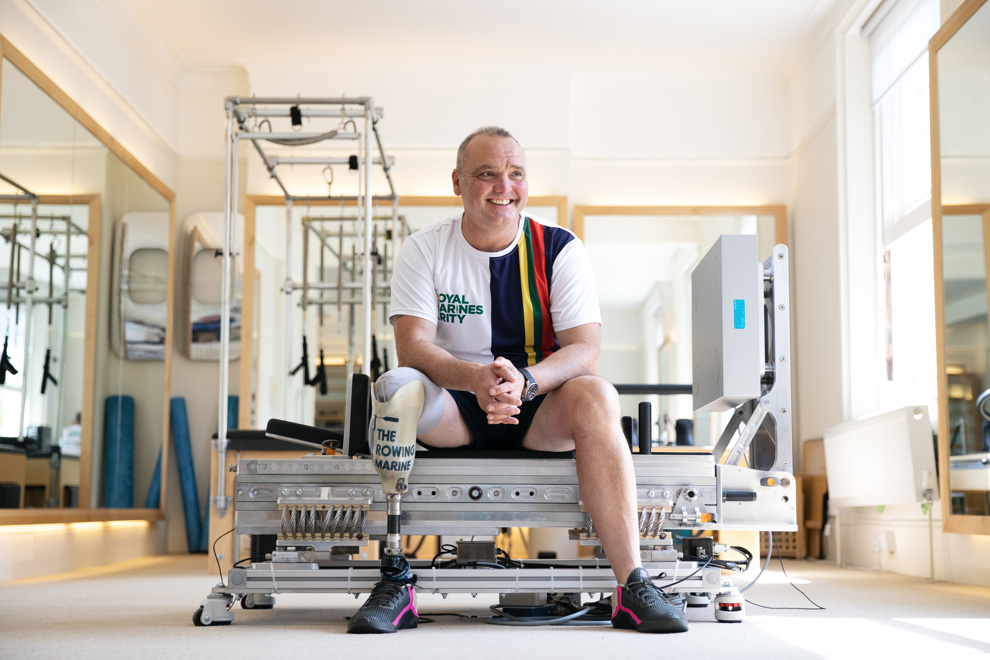A device designed to be used by astronauts could help amputees increase bone density and muscle mass; Blesma's Lee Spencer jumped at the chance to try it out.
Rehabilitation programmes for limbless and injured veterans could be revolutionised by an exercise machine that was originally designed to be used by astronauts on the International Space Station. The ingenious device, known as HIFIm, has been designed to enable astronauts to efficiently ward off the problems of low bone density and muscle loss that occur in space.
The device could also be effective when used in rehabilitation routines for amputees, as its design helps apply controllable loads and forces for exercises such as squat jumps and leg presses. Blesma Member Lee Spencer, who lost his right leg above the knee when helping a motorist after a crash, has described it as a “cracking piece of equipment” after putting it through a series of trials.
The former Royal Marine Colour Sergeant, who has broken records for having solo rowed the Atlantic Ocean, is in training for a series of gruelling physical challenges, has been testing the High Frequency Impulse for Microgravity (HIFIm) prototype.


“I can see it having a great place in exercise programmes as it allows you to do workouts such as squat jumps and leg presses. As an amputee these are very difficult and can cause stress to travel through the stump,” says Lee, who has set multiple rowing records in the last few years.
“It gives a good cardiovascular workout too, so I’m keen to see the machine progressing and providing a great opportunity for amputee veterans.”
Amputees and Astronauts
HIFIm was devised in a pilates studio by sports exercise specialist John Kennett, with the help of a British special effects company that won an Oscar. Users lie down on the machine with their feet positioned on a metal jump board and their torso on an independent, padded carriage. They then squat or jump, causing the carriage and jump board to move apart from each other before springs between them return both to their starting positions.
Astronauts currently exercise two hours a day, six days a week during their stay in space. However, they can still lose 10 per cent of their bone density because of the effects of microgravity. The action of jumping helps to develop bone and muscle mass safely during exercise. Meanwhile, the HIFIm’s use of springs and moving carriages absorb the forces of repeated jumping.

“An astronaut’s current exercise schedule takes up valuable research time. My machine could cut that time to just 10 minutes a day, which would have a game-changing impact on their work, fitness and recovery.” John worked as an engineer on aeroplanes including Concorde and 747s before retraining as a sports therapist and injury rehab specialist.
“The physiological changes caused by living without gravity can be significant, some astronauts can take up to four years to recover. Research has shown that jumping vastly improves muscle and bone density, but the machines currently on the Space Station cannot be used for that. The HIFIm will take up less space and weigh less than the existing machines, and would give astronauts a more complete workout in a much shorter time.”
Space is not the final frontier
Fortunately for Blesma Members, the equipment is geared up for use on Earth as well as in space. “It could allow amputees to experience a dosage of exercise and load in a very safe way so we can gradually improve their muscle mass and preserve bone density,” explains John. “By talking to Lee and letting him experience the HIFIm, we’re hoping to demonstrate that we can gradually increase the loading with less likelihood of an injury at the stump.
“A lot of pressure goes through that critical contact point when using exercise machines in the gym or even when walking because of the ground reaction forces between stump and prosthetic. Lee hadn’t jumped since his accident seven years ago and experienced nothing like it during his rehabilitation. It was great to have him trial the equipment and get his feedback, and we are continuing to work with him.
“The equipment is designed to be light and to fit into small spaces, ideal for the Space Station and on military bases, where space is at a premium.” John initially had the idea for HIFIm after treating a client who had low bone density after recovering from breast cancer.
“I worked from the proverbial garden shed to repurpose existing equipment and developed a programme of jumping for my client to follow. After a year of weekly sessions, her overall bone density had increased by eight per cent,” says John, “and although it was not a clinical trial, the results couldn’t be ignored.”

John is now researching the HIFIm with St Mary’s University, Twickenham, and has the backing of the UK Space Agency and the European Space Agency.
The device could also have further benefits, such as in treating osteoporosis patients who suffer deteriorating bone density that can lead to falls and fractures. Some three million people in the UK suffer from the condition, and the NHS spends around £4.5 billion annually helping the 500,000 patients who need hospital treatment for fragility fractures.
The device will be trialled before it can be approved for public use. Hopefully its progress will continue to provide a brand new form of exercise – both on Earth and in space
We can help
We are dedicated to assisting serving and ex-Service men and women who have suffered life-changing limb loss or the use of a limb, an eye or sight. We support these men and women in their communities throughout the UK. Click the link below to find out the different kinds of support we offer.
Get Support
Leave a comment
Join fellow Members and supporters to exchange information, advice and tips. Before commenting please read our terms of use for commenting on articles.